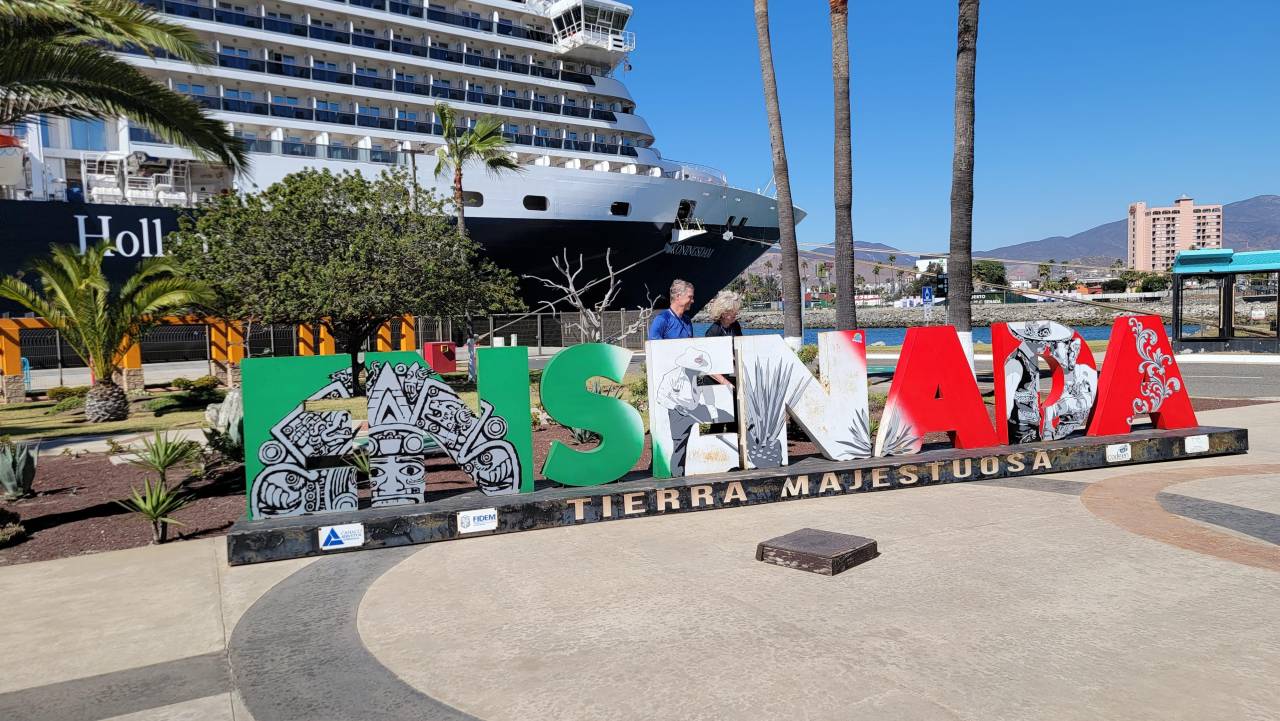The Passenger Vessel Services Act (PVSA) of 1886 is the critical regulatory framework shaping West Coast cruise itineraries, requiring ships to make stops in ports like Victoria, British Columbia and Ensenada. This 137-year-old federal law prohibits foreign-flagged vessels from transporting passengers directly between U.S. ports without calling at a foreign destination. With approximately 95% of cruise ships operating under foreign registry to sidestep U.S. labor laws, taxation, and maritime regulations, cruise lines must strategically incorporate these international port calls into their West Coast sailings. For travelers planning Alaska voyages or California coastal cruises, these mandated foreign stops represent not just cultural diversions but legal necessities that directly influence itinerary design, sailing durations, and ultimately, the cruise experience throughout the Pacific region.
Questions
What West Coast Cruises Have You Been On?
Key Points
The Passenger Vessel Services Act (PVSA) is the reason your cruise ship must visit foreign ports – here's what you need to know about this influential law:
- The PVSA of 1886 requires foreign-flagged vessels (approximately 95% of cruise ships) to visit international ports when traveling between U.S. destinations, creating mandatory stops in places like Victoria, BC and Ensenada, Mexico.
- Cruise lines face penalties of $798 per passenger for PVSA violations, explaining why routes from Seattle to Alaska always include Canadian ports and why California coastal cruises must visit Mexico.
- Originally intended to protect American maritime industries, the PVSA now diverts an estimated $3 billion annually to Canadian ports alone while limiting growth opportunities for U.S. ports like San Diego and San Francisco.
- The law faces increasing scrutiny from lawmakers like Senators Mike Lee and Lisa Murkowski, who have proposed reforms, especially after the COVID-19 pandemic, which highlighted vulnerabilities when Canada closed its ports.
- Despite reform attempts, strong opposition from labor interests and defense security advocates has prevented significant changes to the PVSA, which continues to fundamentally shape cruise itineraries, pricing structures, and regional tourism economies.
Article Index
The Origins and Historical Context of the Passenger Vessel Services Act (PVSA)
When United States President Grover Cleveland enacted the Passenger Vessel Services Act in 1886, it established a legal framework to shape maritime passenger transport for future generations. The concept was solid, like instituting tariffs, if you can create laws to protect domestic industry, then those shipbuilders and maritime workers would be able to resist foreign competition. Unfortunately, the PVSA and the Jones Act, which legislates similar protections for cargo ships, have completely failed.
Originally this penalty was to be $200 but it has now increased to $798 per passenger "transported and landed".
This practice, known as cabotage, remains restricted today. Still, instead of incentivizing domestic shipping companies and cruise lines to support American workers - the "loop hole" of simply stopping in foreign ports like Victoria and Ensenada as well as places like Cozumel or Nassau over in the Caribbean, has allowed cruise lines and shipping companies to avoid penalties and taxes while complying with the laws.
Over the past decade, this legislation has faced serious review because it is now generally accepted that it is doing more harm than benefit to American cities. For instance, during the pandemic, Canada threatened to refuse American ships that wanted to restart Alaska cruises and once again Canada continues to threaten American cruise lines who must stop in Canadian ports. Additionally, it simply pushes consumer spending, taxes, and port fees to foreign ports rather than allowing more American cities to benefit from cruise visitors.
How the PVSA Shapes Modern Cruise Itineraries Along U.S. Coastlines
Although the Passenger Vessel Services Act dates back to 1886, its regulations significantly shape modern cruise operations along U.S. coastlines. The most noticeable thing is that when you book a cruise that starts and ends in American ports, you'll notice that a foreign stop is always included. This isn't coincidental, but a direct result of PVSA requirements and it is something that both Mexico and Canada work hard to maintain. Canada alone benefits from this by more than $3 BILLION in revenue each year, especially on cruises that must stop in Vancouver and Victoria, British Columbia on their way north to Alaska.
Your cruise line faces serious compliance challenges, including fines of $798 per passenger for violations. That number scales quickly when you consider that modern ships from Carnival, Princess, and Royal Caribbean typically carry more than 2,500 guests!
This explains why routes from Seattle to Alaska always visit Victoria or Vancouver and why Mexican ports like Ensenada are standard stops on California coastal cruises. Unfortunately, this punishes ports like San Diego and San Francisco because they are obligated to visit Ensenda instead of focusing on places like San Diego as a southern California port that objectively offers far more for cruisers looking to spend an amazing day in port.
While I enjoy visiting Ensenada, Mexico, these mandatory detours directly impact your sailing experience and ticket prices. Additionally, unlike Caribbean ports that are constantly competing for cruise traffic, Ensenada is frankly sluggish in its development despite receiving nearly a million cruise guests per year and $75 million in per-passenger spending, as well as taxes and port fees!
Another example of how the PVSA is limiting cruiser options is that one of America's best areas to explore on a cruise, Hawaii, is limited to either long cruises originating from Vancouver, stopping in Ensenada, transpacific voyages, or NCL's Pride of America. While Pride of America represents a great way to cruise Hawaii, I can't help but think about how much more popular Hawaii cruises would be if there was more competition and a better variety of cruise lines catering to different groups of cruisers.
Modern Challenges to the Passenger Vessel Services Act
The Passenger Vessel Services Act faces increasing scrutiny in modern times, with several lawmakers leading efforts to reform or repeal the legislation. Senator Mike Lee of Utah has been particularly vocal, introducing multiple bills in early 2021 including the "Open America's Ports Act," which would repeal the PVSA entirely; the "Safeguarding American Tourism Act," exempting large passenger vessels from PVSA requirements; and the "Protecting Jobs in American Ports Act," aimed at eliminating the "US-built" requirement for passenger vessels operating between U.S. ports.
Senator Lisa Murkowski of Alaska has also proposed legislation exempting large ocean liners headed for Alaska from the law. The debate intensified during the COVID-19 pandemic when Canada closed its ports to foreign ships through February 2022, effectively shutting down Alaskan cruises since vessels couldn't make the required foreign stop. This crisis led to a temporary waiver for Alaska cruises and ultimately Canada agreed to open earlier than originally planned.
More recently, in March 2025, Alaska Senator Dan Sullivan threatened to take legal action to permanently prevent cruise ships from stopping at British Columbia ports in response to Premier David Eby's announcement about new fees for commercial trucks traveling through B.C. Sullivan stated he would push for either legislation or an executive order to bypass Canadian ports, which he claimed would "take billions of dollars" of tourism revenue away from western Canadian provinces.
Those who support maintaining the PVSA include:
- U.S. labor unions who argue the act ensures the United States maintains the capability to build large ships
- Owners and operators of U.S. ships in the coastwise trade
- Defense advocates who believe the act enhances U.S. defense capabilities
- The emerging U.S.-flag industry of smaller ships built in U.S. yards that fully comply with PVSA restrictions
Those advocating for reform or repeal point to several issues:
- The law diverts tourism dollars to foreign destinations like Canada, Mexico, and Panama
- There is essentially no large U.S. oceangoing passenger liner industry left to protect (only one large U.S.-flagged cruise vessel qualified under the PVSA)
- No large cruise ship has been built in the U.S. since 1958
- U.S. ports like San Francisco, Portland, Norfolk, and Philadelphia have been restricted in their growth
- The law gives foreign nations like Canada significant control over U.S. cruise seasons
Despite numerous attempts to modify or repeal the act, strong opposition from labor interests and defense security advocates has historically prevented significant changes to U.S. cabotage laws.
The 19th Century PVSA Continues to Shape Modern Cruise Itineraries
The Passenger Vessel Services Act of 1886 remains a defining force in North American cruise operations, explaining those mandatory international port stops in places like Ensenada and Victoria that puzzle many first-time cruisers. This legislation creates distinctive patterns in West Coast itineraries while significantly influencing pricing structures and regional tourism economies. Understanding the PVSA provides crucial context for why non-U.S. flagged vessels which comprise nearly the entire mainstream cruise fleet—must include these foreign destinations.
Ready to navigate the complexities of West Coast cruising with confidence? Heather Hills from Flow Voyages specializes in crafting optimized itineraries that leverage PVSA requirements to your advantage. Her deep knowledge of Alaska journeys, Pacific Coast wine explorations, and Mexican Riviera adventures ensures your cruise experience maximizes time in premier destinations while meeting all regulatory requirements.
Thanks for reading. We hope this was helpful!
Why stop now?
Participate In Our Polls | Ask or Answer A Cruise Question | Contact Heather to Book Your Next Cruise!

